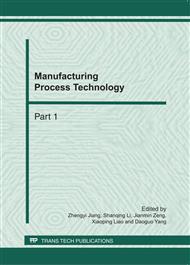p.1897
p.1901
p.1906
p.1910
p.1914
p.1918
p.1922
p.1926
p.1930
Power Flow and Energy Sharing between an Oscillator and a Continuous Receiver Structure
Abstract:
A key assumption of conventional Statistical Energy Analysis (SEA) theory is that, for two coupled subsystems, the transmitted power from one to another is proportional to the energy differences between the mode pairs of the two subsystems. Previous research has shown that such an assumption remains valid if each individual subsystem is of high modal density. This thus limits the successful applications of SEA theory mostly to the regime of high frequency vibration modeling. This paper argues that, under certain coupling conditions, conventional SEA can be extended to solve the mid-frequency vibration problems where systems may consist of both mode-dense and mode-spare subsystems, e.g. ribbed-plates.
Info:
Periodical:
Pages:
1914-1917
Citation:
Online since:
February 2011
Authors:
Keywords:
Price:
Сopyright:
© 2011 Trans Tech Publications Ltd. All Rights Reserved
Share:
Citation:


